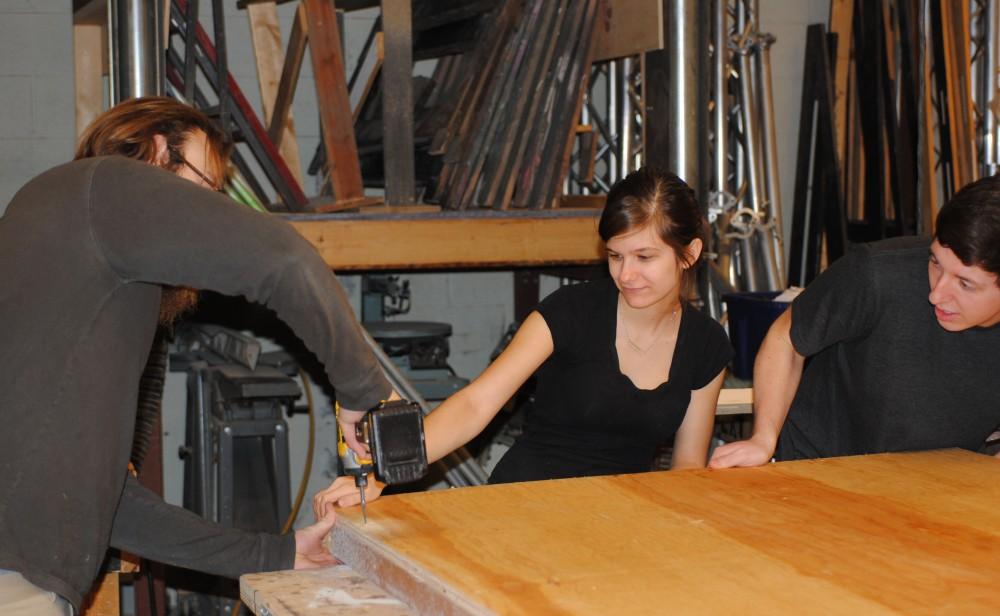Behind the curtain

GVL / Brianna Olson Noah Fettig using the drill
Oct 20, 2014
Behind the rows of seats, past the thick velvet curtains and over the worn-in wood floor of the Grand Valley State University Louis Armstrong Theatre is the scene shop. It is in this workshop that eight pairs of hands construct the sets of four main stage productions, one opera and a number of student productions.
“It is more than a typical office job because you get to actually do things and make things and see your accomplishment,” said Lisa Dunkelburger, a scene shop worker.
The hidden workshop is forever decorated with a spew of sawdust, and the tunes of the Postal Service or Maroon 5 are regularly accompanied by the harmony of power tools.
Under the direction of technical director Chris Mahlmann eight students from various majors and interests work together to create the scenery of many GVSU productions.
Noah Fettig, Alyssa Simmert, Cody Robison, Justin Mackey, Mitchell Schaekel, Mary Fentiman, Brad Schnute and Dunkelburger build side-by-side with student volunteers and students working for class credit.
“When I first came, this was only for work-study students, and I was turning away theatre majors who really wanted to help and wanted to, outside of the class, participate,” Mahlmann said. “Now I can hire one non work-study theatre major, which is great.”
Dunkelburger began working at the scene shop over two years ago. After two years she said she still enjoys going to work and building the sets.
“The people are great and the environment is great,” Dunkelburger said. “I love being able to come watch a show and be like ‘I made that. I was a part of this.’”
Matthew Fowler began working in the scene shop over a year ago during his Shakespeare shop apprenticeship, but today he is contracted out for work. The reason he continued to work with the program is because of applicable knowledge that the work produces.
“Working in the shop gives you more potential skills, especially if you’re looking to go into the business of theatre,” Fowler said. “The more things you can do the better, especially out in the business of theatre. You got to be able to pitch in and lend a hand.”
Ninety-five percent of the time the crew is working on set building, but they also have to help out with maintenance around the Louis Armstrong Theatre as well.
As their main responsibility is to build each set start to finish, each member of the crew must work closely with one another in order to finish the sets on time.
“The teamwork aspect, there is nothing like it,” Fowler said.
The job comes with a lot of fun times, but also many challenging moments. As opening night for a production creeps closer and closer, there is a sign for the students that indicates it is time to work at full force – Mahlmann’s hair will go up into a ponytail.
“The last day before a production is usually pretty stressful running around trying to put last minute details on,” Dunkelburger said.
It is the continually changing environment and the feeling of accomplishment when the curtains are pulled back on opening night that keeps each of the workers satisfied at the scene shop. Although some of the students work for money, it is more than just a job for many of them.
“Seeing it all come together on opening night,” Dunkelburger said. “It is just a feeling of accomplishment that we managed to get everything done somehow.”























